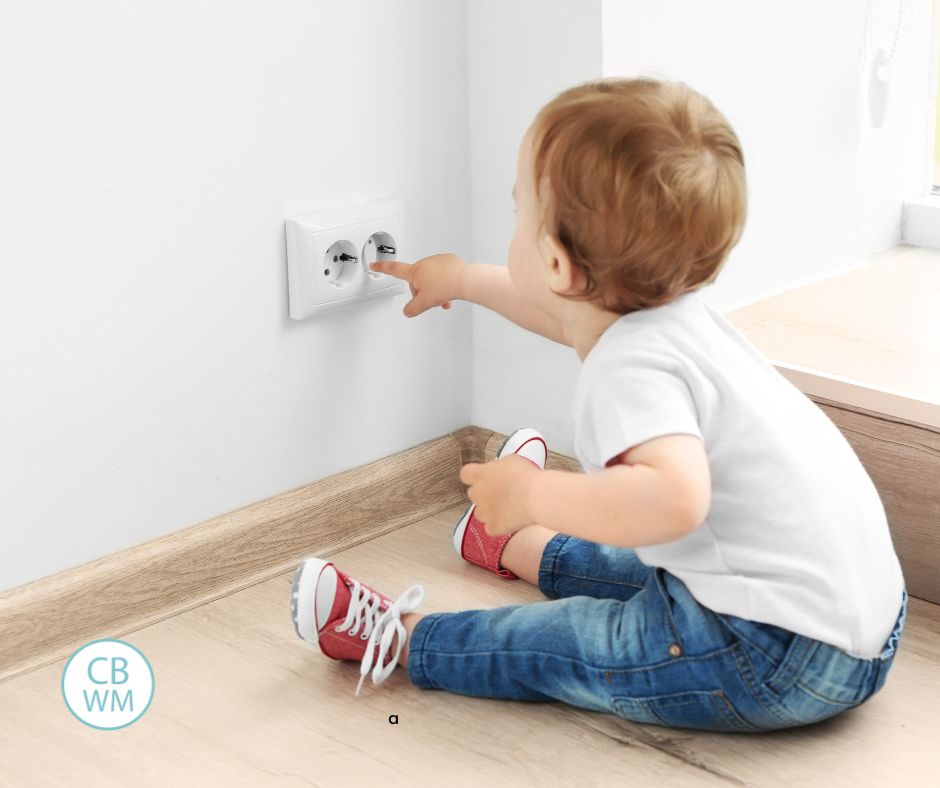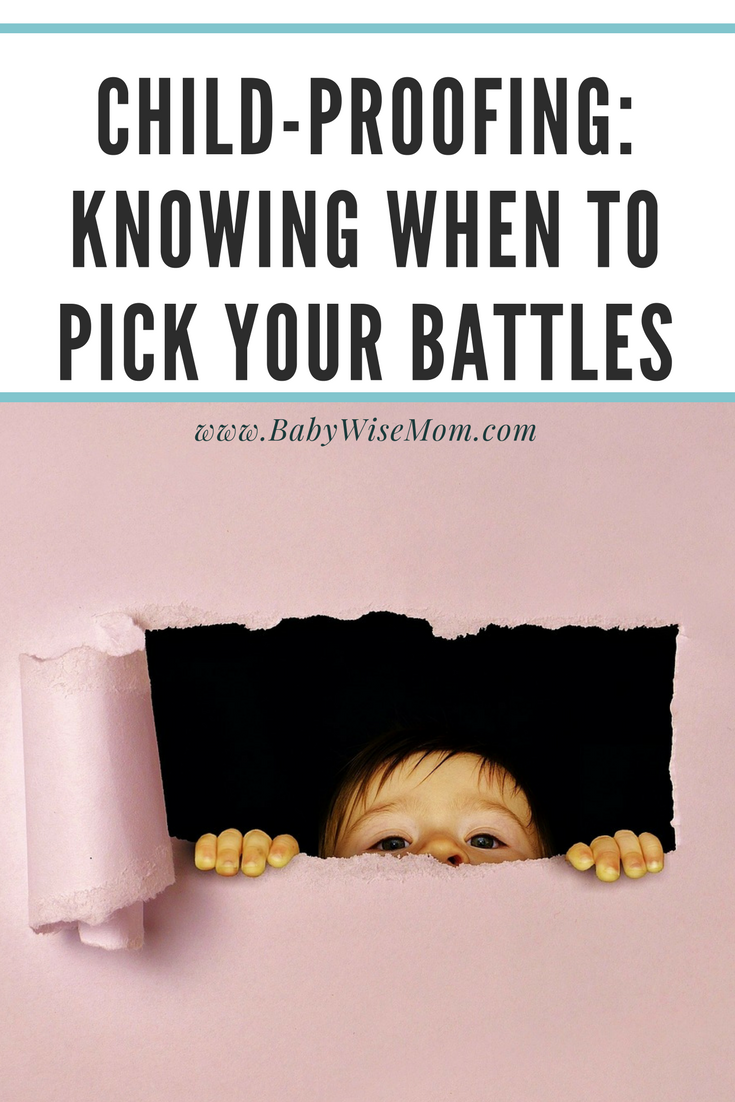How to house-proof your child and also keep the home safe for your little one. Know when to child-proof and when to house-proof.

I am more of a “house-proofer” than a “child-proofer.” By that, I mean that I would generally rather teach my child to not touch something than to put bubble wrap around it.
There are times, however, that it is wise to go the child-proofing route.
We want to leave opportunities to teach our children, but not EVERY opportunity needs to be an opportunity.
“If your son or daughter develops a fondness with the toilet seat in the guest bathroom, shut the door and keep it closed. We promise, you will have enough opportunities to train your pre-toddler and toddler in the living room and kitchen”.
(Babywise Book Two, page 109)
If you are more into house-proofing than child-proofing like I am, you will need to know when to stand your ground and when to pick your battles.
As you are house-proofing your baby (see Child-Proofing vs. House-Proofing), there are a few things to keep in mind.
Post Contents
1-Protect irreplaceable items
While in general I don’t rearrange my house for my children, there are some items I would be devastated to lose.
Well, I can only think of one off the top of my head. I have a vase that is my Braxston vase. It is a vase I got when I lost him. For me, it is one of the few tangible items I have of him.
That is an item I do not mess around with. I make sure it is up high and out of reach of little ones.
If you have items that you would be very upset if they got ruined, absolutely put them out of reach.
Yes, the idea is that your child will not touch things that are “no”–BUT without a doubt, your child will test those boundaries and you don’t want a test to end in something you adore being ruined.
2- Protect children
There are some things you want childproof in order to protect children.
For a short time before she turned one, Kaitlyn was fascinated by outlets and really wanted to stick her fingers in it. I put outlet covers on our outlets so she wouldn’t get hurt.
If you keep cleaning supplies or chemicals in a location your baby or toddler could reach, it is wise to child-proof those cabinets or drawers.
You want to keep your children safe–you just want to make sure you are going for real safety and not trying to prevent every single bump and bruise that might come along. Children do learn from falls.
Protect against real danger but don’t try to prevent all possible pain your child can encounter. No bubble wrap.
3- Keep yourself sane
As the opening quote indicates, you can limit your training grounds to certain areas of the house.
You don’t have to keep everything open for testing at all times. Start with small areas and slowly expand where your child is free to go as he shows the ability to handle that freedom.
In our previous home, I had the baggies and like items in a drawer that was low enough for little ones to get into. In order to prevent a mess I didn’t want to deal with, I put a latch on that one drawer.
All other drawers were okay and were used as our training drawers, but that one drawer was a drawer I didn’t want to clean up if it became the testing ground.
Conclusion
So as you are teaching your child boundaries, keep these things in mind so you can pick your battles.The funnel easily applies to this as it does to other areas in your child’s life.
Related Posts
- Should You Baby Proof Your Christmas Tree
- Tips for Baby-Proofing Your Home
- Train To Obey Your Voice
- Child-Proofing vs. House-Proofing

